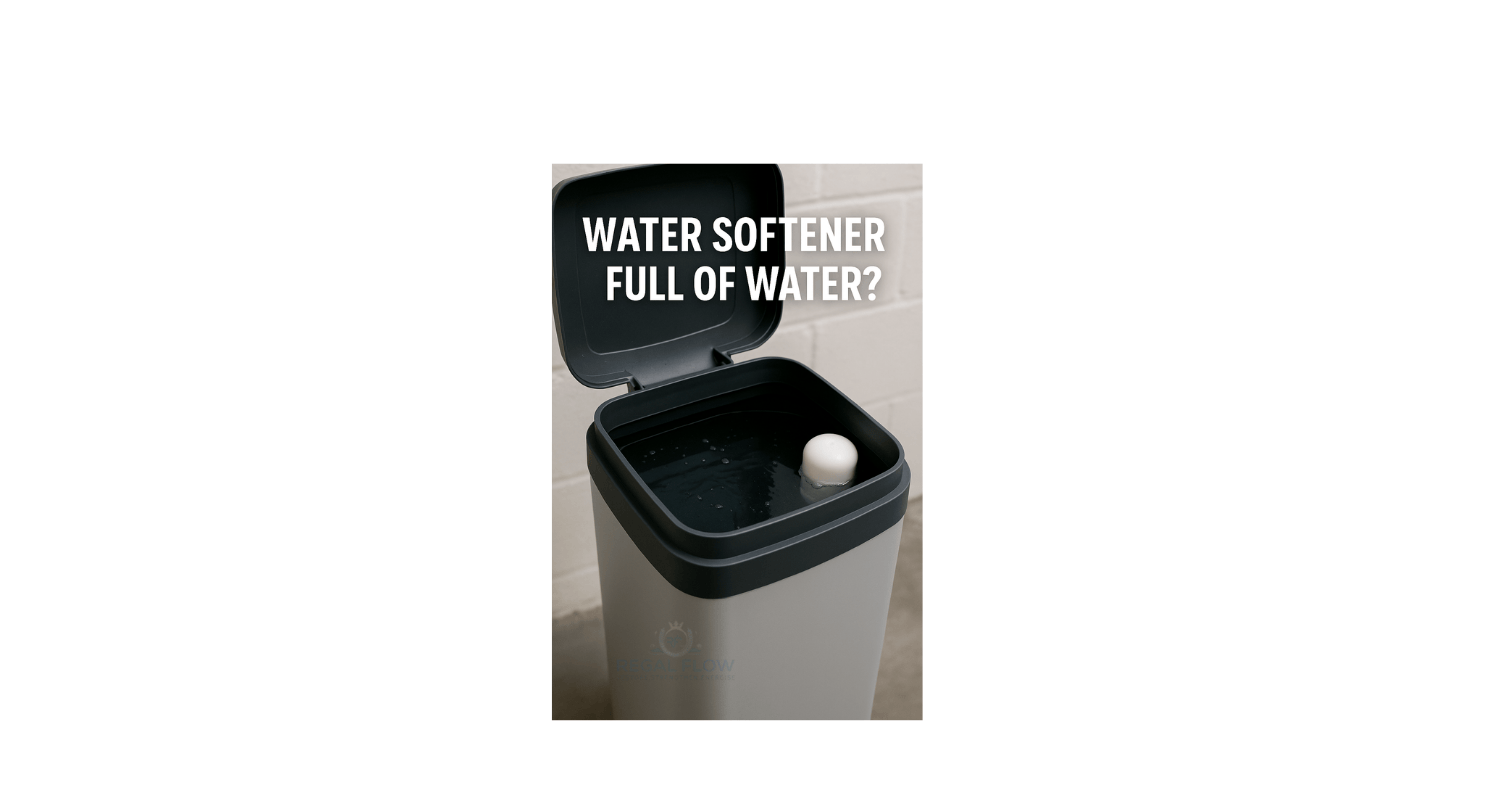
Why Is My Water Softener Full of Water?
Opened your Water Softener lid to find a surprise puddle? You’re not alone. A softener full of water might seem ready for a pool party, but it’s usually a sign something’s off.
It’s likely due to a blockage, malfunction, or regeneration cycle issue—and it can affect maintenance and performance. Keep reading to learn what’s normal, what’s not, and how to fix it fast. We’ll also cover how this impacts systems like countertop dispensers and reverse osmosis units that rely on steady softened water.
Understanding Why Your Water Softener is Full of Water
Normal Water Levels in a Water Softener
Let’s get one thing straight—seeing some water in your brine tank is completely normal. Usually, a few inches of water sit at the bottom of the tank, especially just before or after a regeneration cycle. This water mixes with salt to create the brine needed to clean the resin beads inside. It’s all part of the softening magic. But if your tank looks more like it’s auditioning as a hot tub, you’ve likely got a problem that needs sorting.
Potential Reasons for Excess Water
Several things can cause your water softener to take on more water than it should. Let’s take a closer look at the most common culprits behind your miniature flood.
Issues with the Float Valve Assembly
Think of the float valve like the tank’s lifeguard—it tells the system when to stop filling up. But if it’s stuck, misaligned, or broken, the water keeps flowing long past the point it should. It’s a tiny part with a big responsibility, and when it fails, your tank can’t control its own water levels. Even a bit of debris or salt crust can throw it off.
Problems with the Drain Line
Ever tried drinking through a straw with a piece of tissue in it? That’s what a blocked drain line is like for your water softener. If there’s a kink, blockage, or build-up in the hose, it won’t drain properly during regeneration. The result? Water backs up into the brine tank instead of exiting like it’s supposed to. It’s one of the most common—and fixable—issues.
Malfunctioning Control Valve
This is the control centre of your softener, like the thermostat is to your boiler. When it’s working well, it ensures every cycle runs on time. But when it fails, you get mistimed refills or cycles that don’t finish. That can leave your softener holding onto more water than necessary, leading to overflow.
Excessive Backwash Water
Sometimes the issue isn’t draining, but overfilling. If your system sends too much water during the backwash stage, it has nowhere to go. This can happen if settings are off, there’s a mechanical glitch, or the resin bed is dirty and struggling to function. It’s like overwatering a plant—what doesn’t soak in ends up pooling.
Ready to upgrade your water softener quality? Explore our full range of Water Softeners today.
Troubleshooting a Waterlogged Softener
Steps to Take
Ready to get hands-on? Here’s where to start.
-
Inspect the float valve: Lift and lower it gently. If it’s stuck or hard to move, give it a clean or replace it.
-
Check the drain line: Remove any visible blockages and ensure it’s not kinked or twisted.
-
Review the control valve settings: Sometimes a simple reset fixes an overzealous regeneration schedule.
-
Clean the brine tank: Break up salt bridges (those rock-hard salt crusts) and clear out any sludge at the bottom.
Often, these basic checks are all you need to bring things back to normal.
And you don’t need to be a plumbing pro to manage them.
When to Call a Professional
If you’ve done all the above and your water softener still looks like it’s prepping for a water fight, it might be time to ring in a professional. Issues with the resin bed, internal valves, or electronics might not be visible or accessible. A plumber can test components, spot hidden problems, and make repairs safely. Spending a little now could save you from replacing your entire system later.
Prevention Tips
Let’s keep things dry, shall we?
Here are a few simple habits that can help you avoid future brine tank floods:
-
Clean the tank every few months: Don’t wait until it’s full of gunk.
-
Use quality salt: Cheap rock salt clogs things up—stick to high-purity pellets or crystals.
-
Check the float and drain line monthly: A five-minute glance can save hours of mopping.
-
Don’t overfill with salt: Leave a gap at the top so the float can do its job.
-
Run a full system inspection annually: Especially if your softener is linked to Reverse Osmosis or Countertop Dispensers—they all rely on each other.
Prevention doesn’t take much effort, but it makes a world of difference. Your system will run smoother, last longer, and your water will stay soft, clean, and reliable.
Don’t wait for limescale to take over — find your new Water Softener now
More Water Softener info our customers have found helpful
- Maintaining Your Water Softener: Tips For Optimal Performance
- When to Refill a Water Softener
- Water Softener Cleaner
- What Water Softener Pellets Do I Need?
- What Water Softener Salt Should I Use?
- What Is the Life Expectancy of a Water Softener?
- How Often Should You Flush Your Water Softener?
- Can You Shower When Your Water Softener Is Regenerating?
- Will Turning Off Water Damage a Water Softener?
- How Do You Flush Water Softener Resin Out of Pipes?
- What Is the Easiest Way to Clean Resin Out of a Pipe?
-
Can You Rinse Resin Down the Drain?
- Do Water Softeners Run on Electricity?


Leave a comment